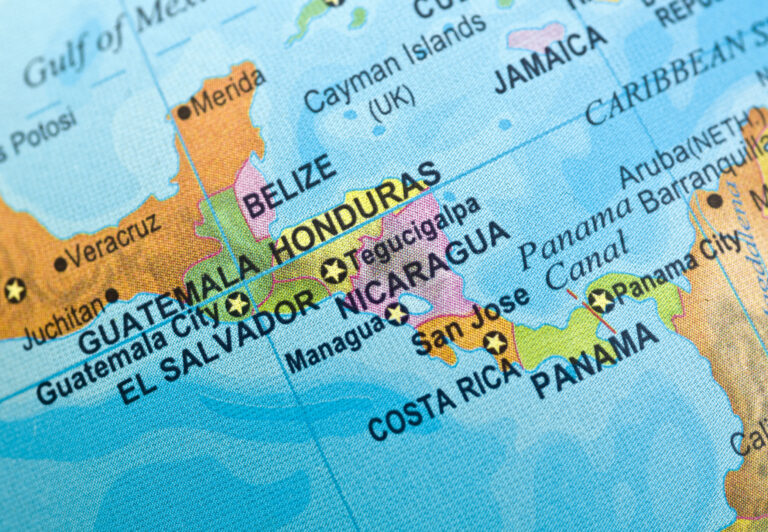By tapping into an immense reservoir of blocked corporate cash, American policy-makers hope to assure vast and growing reserves of capital with which to tackle the “problem” of African, Asian, and Latin American populations that happen to be growing much faster than those in the West.
In 1991, the United Nations estimated that a yearly sum of $4.5 to $5 billion was being directed to population programs in developing countries. This figure, which has grown tremendously in the last five years, includes contributions from bilateral donors such as the US, the European nations and Japan, from international agencies like those associated with the UN, and from multinational lending institutions, including the World Bank and the various regional development banks.
Moreover, a vast amount of money not explicitly designated as “population” finance is used to further the family planning effort. During the 1980s, the diversion of funds from government non-population budgets to fertility-reduction measures soared, especially in the US, where literally hundreds of millions from the Economic Support Funds program, regional development accounts, and other non-population budgets were redirected to “strengthen” population planning abroad.
An almost unlimited variety of other “development” efforts — health, education, energy, commodity imports, infrastructure, and debt relief, for example — are also used by governments and other international agencies such as the World Bank, to promote population control policies, either through requiring recipient nations to incorporate family planning into another program or by holding funds or loans hostage to the development of a national commitment to tackle the “over-population” problem.
“Blocked assets” freed?
But there is yet another source of funds waiting to be tapped that could be larger than all the above efforts combined. Indeed, this source dwarfs most national government budgets. The money consists of “blocked assets” — profits generated by international corporations operating in developing nations that prohibit the transfer of money outside the country. And USAID is actively working to free up these funds for population control efforts.
A document produced by the Agency for International Development in September 1992 — and subsequently released under the federal Freedom of Information Act — notes that “there are up to $200 billion of corporate blocked funds” overseas. The document is a contract and “statement of work” authorizing an award of’$36.4 million to the giant accounting firm Deloitte and Touche to act as a mediator with global corporations and to negotiate deals that would turn blocked assets into “private” contributions for family planning in host countries.
As the text explains, “multinational corporations have large amounts of blocked funds, profits which they cannot repatriate. These funds are generally held in bank accounts at low rate of taxable interest; it may appeal to some of the larger companies to donate them to a charitable cause in the host country and claim a deduction in their country of origin.”
Not only would the international corporation be able to “claim a deduction” for contributing to “charitable” work in countries where the funds are held, they might also earn “credits” for parent companies in the U.S. Says the same project authorization document: “The contractor shall investigate the possible provision of mixed credits through the Export-Import Bank to private U.S. companies for population-related investments.”
In some cases, private donations stimulated by this effort may pay even higher dividends than the numbers suggest. Says the project planning paper, “the Coca-Cola Company in Mexico may have very large sums of Mexican currency which it cannot repatriate, and which it would sell for foreign exchange at a discounted price to a party in need of that local currency.” In other words, the corporations could either donate the money directly to an in-country population control program and take a tax break or they could exchange it for foreign currency at a reduced rate, accepting an amount less than the value of the blocked funds.
Another potential source of revenue envisioned under this effort is debt purchasing. This is a process in which money is supplied to reduce a country’s foreign debt in exchange for local currency. “The contractor shall transact financial transfers in debt conversion and corporate blocked funds conversion on behalf of developing country organizations in order to increase the resources devoted to family planning,” says the AID-Deloitte and Touche contract. It adds that the firm is expected to “negotiate with the government representatives of the debtor country to reach an agreement on terms… and schedule for the retirement of debt in exchange for local currency.” The local cash resulting from project activities will then “be donated to other Office of Population cooperating agencies for use in supporting debtor country population activities.”
The Deloitte and Touche activity, aptly titled the “Profit Project,” represents a notable departure from the usual U.S. government population activity. Although blocked assets and funds generated through debt swaps are supposed to be given to agencies and activities supported by the Agency for International Development, they are still technically private donations. This makes them, at least theoretically, exempt from the disclosure and accountability rules that apply to projects directly Funded by the U.S. government.
Robert Bonardi, a spokesman for the Profit Project headquarters in Arlington, Virginia, says that no such corporate cash transfers or debt conversions have yet been completed. But the group has managed to create a special fund called the Summa Foundation, established as a separate legal entity in the state of Virginia to manage money generated under the program. Its purpose is to make grants and loans to private sector family planning programs, to offer technical assistance to commercial birth control providers, and to serve as a pipe- line between AID and selected subprojects.
Although Bonardi estimates that the fledgling foundation has accumulated only about $4 to $5 million to date, it will be getting additional money from investments. And the fund is already on the move.
In Brazil it has helped to finance a “medical” center that specializes in birth control (retaining a 49 percent share of that venture).
In India it is providing aid in the form of payments to a local non-government organization to assist a sugar plantation with an in-house family planning clinic for its workers.
In Indonesia it has created a $1 million loan fund for mid-wives who are willing to work in the population sector.
In the Philippines it is working with several private sector agencies to promote for-profit family planning services and “increase the use of modern family planning methods” in the predominantly Catholic nation.
The Profit Project is less notable for what it has done than for its future potential. Indeed, the amount of money that could theoretically be generated through this operation is almost unbelievable.
According to the 1992 AID contract, no less than $19 billion in blocked corporate funds are held in Nigeria alone — a figure nearly twice the entire Nigerian government budget for the same year. If even a portion of this money were to be set aside in a slush fund to bankroll foreign intervention, almost anything would be possible.
Furthermore, the Profit initiative is not limited to applying its Funds to Family planning “services” — it is designed to produce at very specific kind of regulatory reform,” as well. According to AID’s work statement, the contractor is supposed to work with host country officials to “identify and analyze specific trade barriers for contraceptive commodities,” and to “work for their removal.” The company is also required to “assist in the development of a regulatory framework that permits the expansion of private sector family planning services.”
The Profit Project’s unique approach to population control serves two distinct but equally useful functions. First, it establishes a means by which non-governmental funds can be systematically channeled into the population program and, at the same time, it makes the money virtually impossible to trace.
The U.S. foreign policy establishment is fully aware of growing public discontent with foreign aid, and officials recognize that allocations for family planning are subject to the budget-cutting, deficit-reducing mood that periodically grips Congress, especially during election years.
PROFIT coordinated
How does the Profit Project fit into the context of other government actions, including diplomatic negotiations, to increase worldwide commitment to population control?
At a 25 April 1994 press briefing, U.S. State Department Counselor Timothy Wirth announced that Japan’s financial contribution to population programs would be increased drastically, while the government of Germany had agreed to double its expenditures. The Japanese, said Wirth, “are going to increase their contribution for population policies ten times, to go from what has been about $40 million a year to $3 billion over seven years for population and AIDS, which comes out to more than $400 million a year, or an increase by ten times.”
Most importantly, Wirth flatly stated that the increase in funding came “as part of the [trade] agreements between the United States and Japan announced in February.” He added: “We are very hopeful that there will be also significant contributions from the EU [European Union], from the British, and from others.”
The Profit plan — at least as devised on paper — would also allow the origin of the money to be concealed, thereby permitting its use in ways that cannot be attributed to the US or other governments. Corporate money given to a “private” foundation, in other words, can be spent on projects where official US sponsorship might be problematic.
One example of such projects are those in which coercion is openly practiced.
Indonesia’s national family planning program, developed by the United States in the aftermath of the bloody coup in the mid-1960s, has been heavily subsidized by the Agency for International Development ever since. According to a March 1992 article in the monthly journal Inside Indonesia, government population officials routinely use threats and intimidation to bring people into family planning clinics. When such measures fail, it is alleged, a more direct strategy, known as “safari,” is undertaken. As reported by a team of observers who witnessed “safari” in action: “Women were taken into a locked room where they were held at gunpoint. The women panicked and tried to escape through the locked glass windows, which resulted in a number of injuries from shattered glass. In one safari during our study in 1990, IUDs were inserted at gunpoint to those who continued to resist.”1
The United States is not alone in financing the Indonesian population control pro- gram. It also gets money from the World Bank, the United Nations Population Fund (UNFPA), the World Health Organization, and the Australian government. Because the money is co-mingled under the banner of the country’s national birth control organization, it cannot be proved that U.S. money specifically pays for “safari” expeditions, but it certainly cannot be disproved either. By ensuring that there is sufficient “private” capital to bankroll potentially-embarrassing projects like Indonesia’s, U.S. leaders would be able to assure their continuation while, at the same time, insisting their hands are clean.
The use of private resources can also be a means of getting population financing to countries that might not otherwise accept (or be qualified to receive) such “assistance.” The US government doesn’t officially give aid to Iran, for example, but huge amounts of World Bank money have been spent there in the last few years to promote a new population policy. And the UNFPA is conducting aggressive education and motivation programs which, if adequately supported by other donors, could eventually become as brutal as Indonesia’s.
Yet according to a UN directory of population projects published a year ago the only money to come in from the US was $44,000 from the Rockefeller Foundation for a study of Iranian marriage and fertility trends. A large foundation set up for the exclusive purpose of distributing “private” aid would make possible a far larger effort in countries that have either been decertified for foreign aid or refuse to accept such intrusions from the West.
But perhaps the most alarming consequence of the trend toward the “privatization” of population control is the fact that disclosure requirements would no longer apply. As difficult as it may be today to trace AID funds overseas, one can at least request access to the major records. But once the projects are “off” the books,” so to speak, there is no “right” to information. The effect could be a rash of coercive programs like those in Indonesia and China carried out on a massive scale with no public outcry or acknowledgment whatsoever.
Endnotes
1 Wardah Hafidz et al. “Family Planning in Indonesia: the case for policy reorientation,” Inside Indonesia, March 1992, 20.










